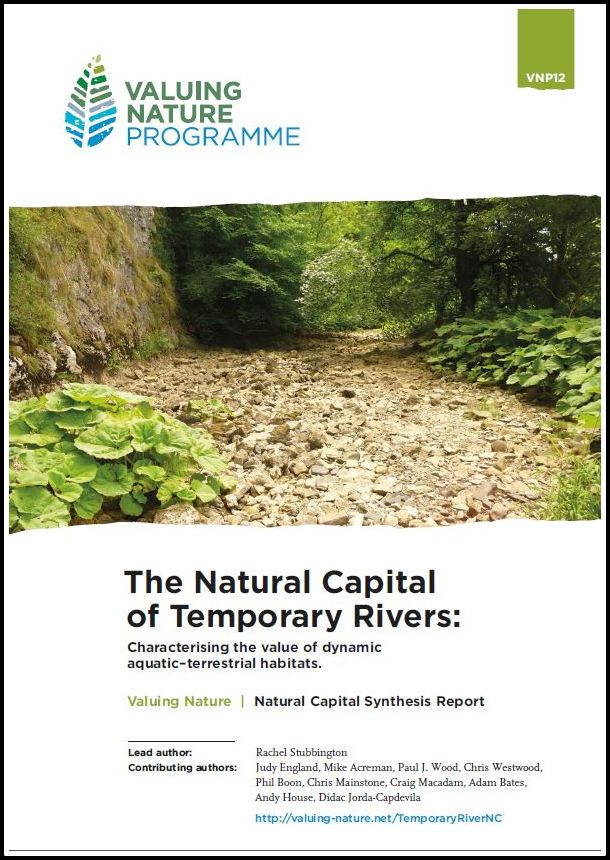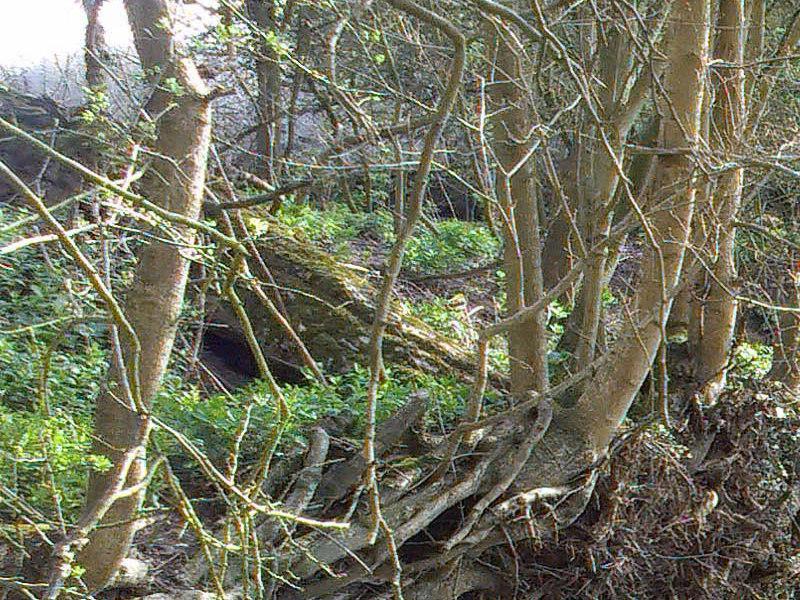
Lead: Rachel Stubbington, Nottingham Trent University
The natural capital of temporary rivers: characterising the value of dynamic aquatic‐terrestrial habitats
Report now available - download here.
From the lead author:
"This report highlights not only the biodiversity of these unique habitats, but also the benefits that people get from them. We hope that this will improve recognition of temporary rivers – dynamic ecosystems which naturally dry sometimes – as landscape features that we should value and protect."
Project Summary
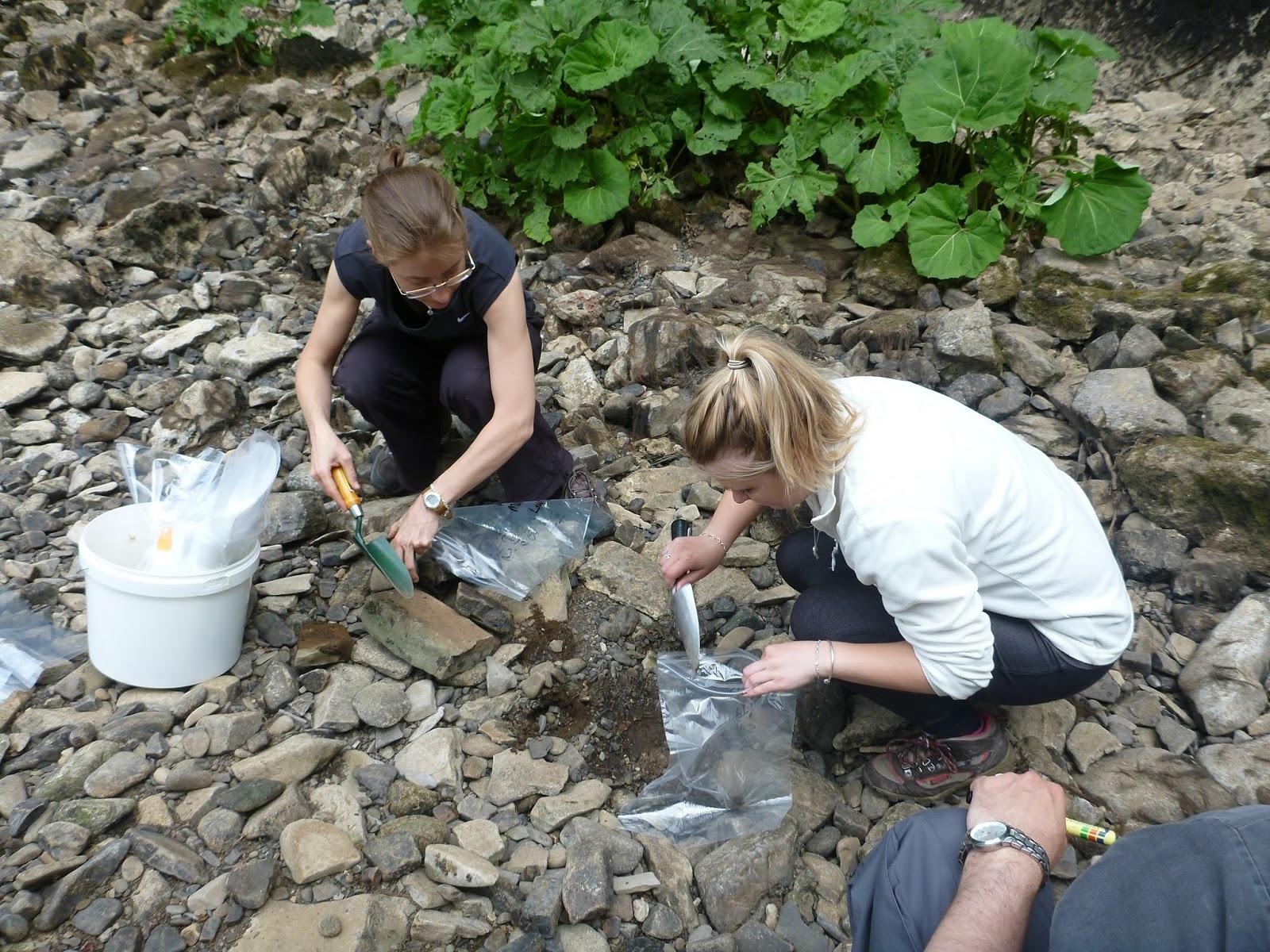
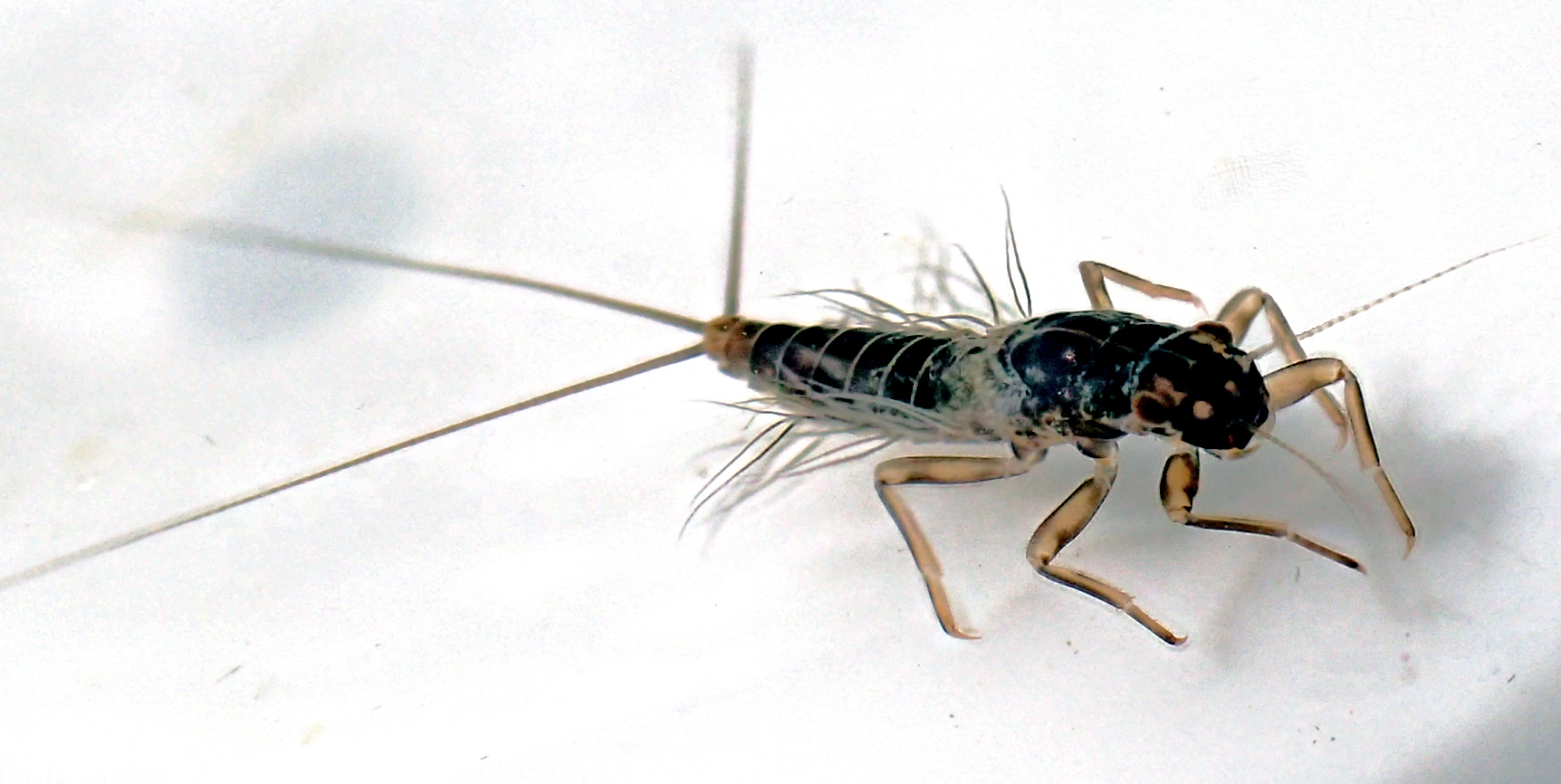 However, these ‘natural assets’ remain poorly characterised and the ecosystem services that temporary rivers provide, including flood protection, water supply, and pollution control, remain undocumented. Natural intermittence and dry phases are therefore undervalued, and poor public perception can comprise our ability to make ecologically robust, socially acceptable decisions.
However, these ‘natural assets’ remain poorly characterised and the ecosystem services that temporary rivers provide, including flood protection, water supply, and pollution control, remain undocumented. Natural intermittence and dry phases are therefore undervalued, and poor public perception can comprise our ability to make ecologically robust, socially acceptable decisions.
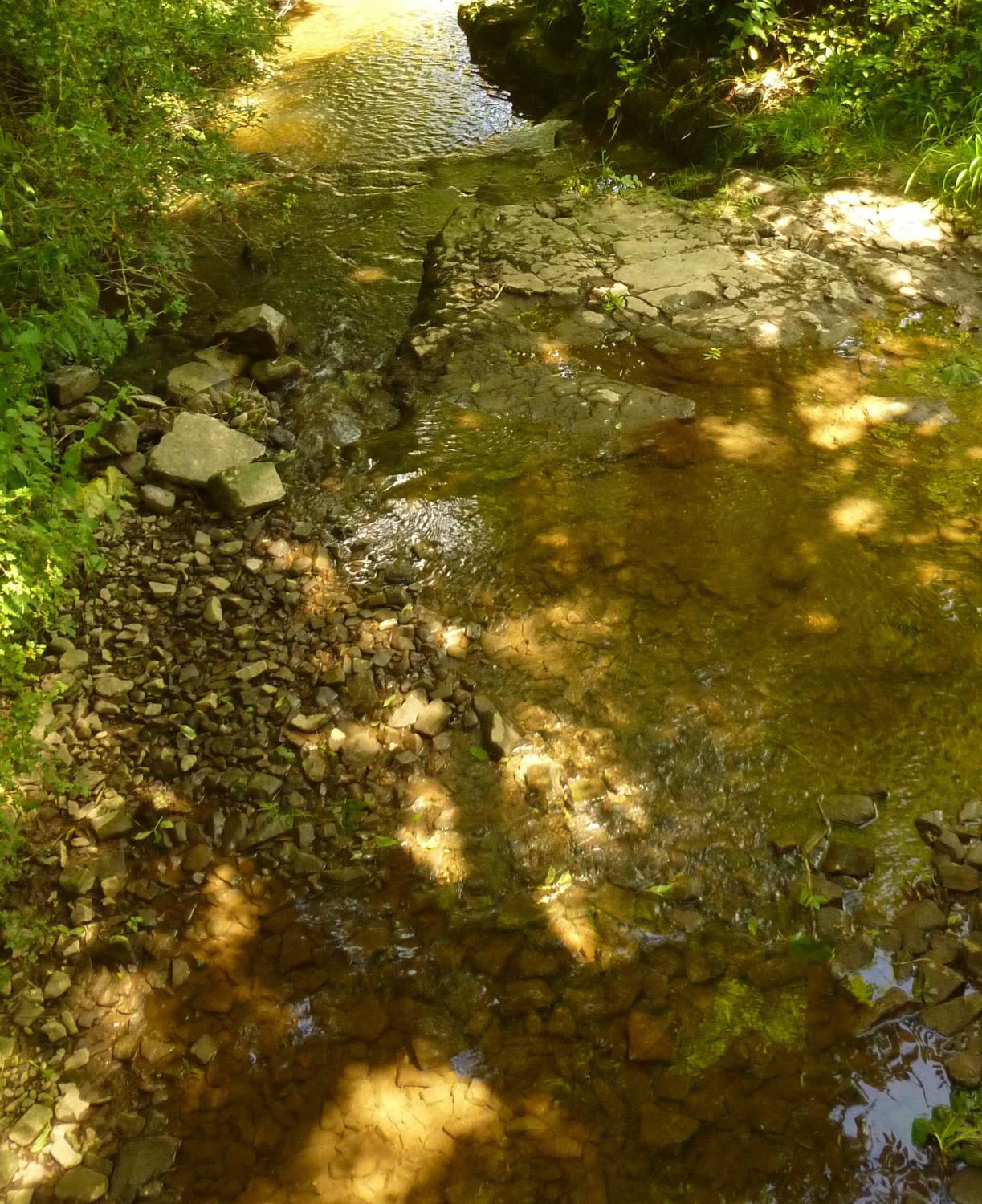 Our project will compile published research to characterise the natural assets of temporary rivers and link these to ecosystem services that people value. We will propose metrics to track progress towards service provision goals across wet and dry phases, allowing us to value provision at local to national scales, and informing management strategies that seek to maintain and enhance service provision.
Our project will compile published research to characterise the natural assets of temporary rivers and link these to ecosystem services that people value. We will propose metrics to track progress towards service provision goals across wet and dry phases, allowing us to value provision at local to national scales, and informing management strategies that seek to maintain and enhance service provision.
Outputs
Presentation introducing project ideas
Photo of Paraleptophlebia werneri (T-river specialist) provided by Adrian Chalkley.

